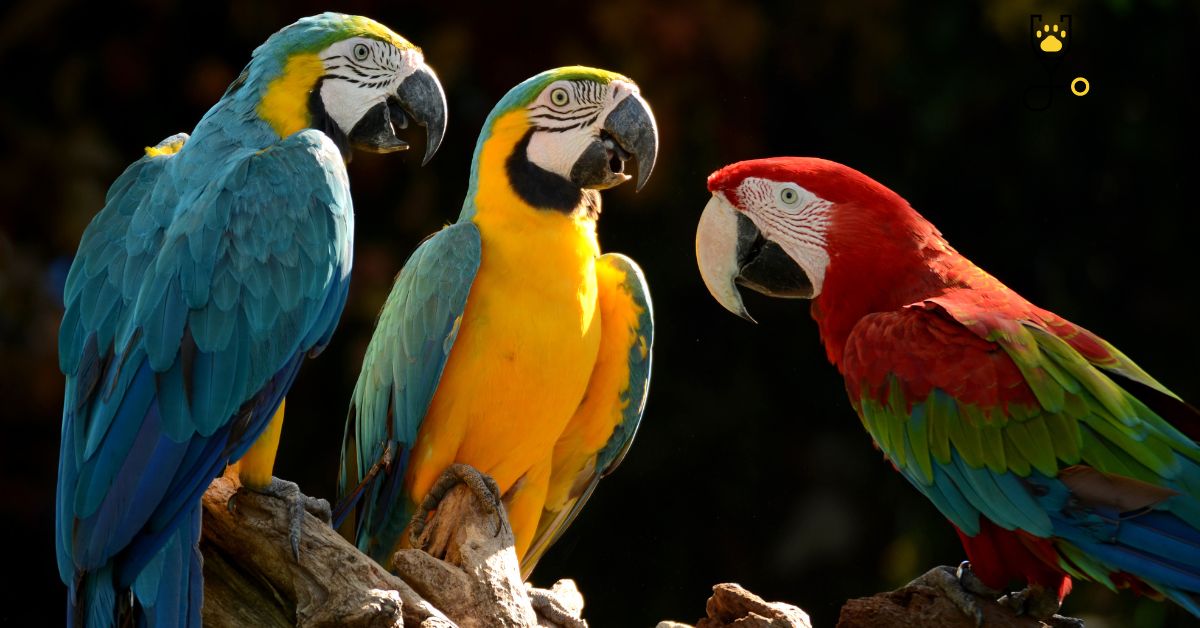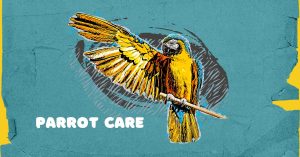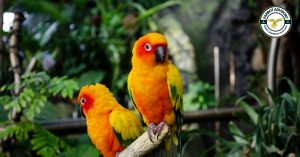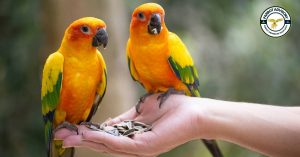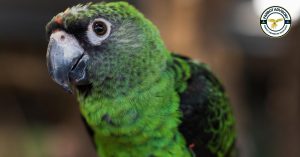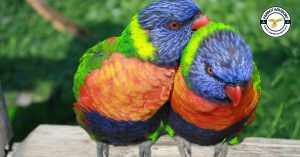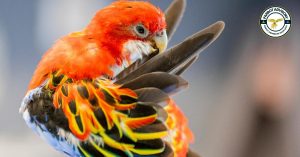Do you already have a pet parrot in your home or are you thinking about getting one? Training your bird can be both enjoyable and rewarding for both of you. It’s possible to teach your pet parrot new behaviors, from simple tricks to elaborate movements. With the proper techniques, patience, and plenty of positive reinforcement, training your bird can become an educational experience that strengthens the bond between you. In this blog post, we will look at some important tips and strategies on how to successfully train pet parrots so that they become well-behaved life companions.
10 ways to train your parrot
1. Establish a daily routine
that includes regular training sessions. This will help your parrot to understand what behaviors are expected of it and when they are expected

2. Begin by teaching basic commands
such as “come”, “sit”, or “stay”. These are foundation behaviors that can be built upon later and will lay the groundwork for more complex movements and tricks.
3. Be patient and consistent with your training efforts.
Parrots can be stubborn at times, so you may need to keep trying multiple times before your bird catches on to a new trick or behavior.
4. Use positive reinforcement techniques
when training your parrot, such as offering praise or treats when it performs the desired behavior. Avoid yelling or punishing your bird, as this will likely lead to bad behaviors and defiance in response.
5. Practice the same trick
command over and over again until your parrot gets the hang of it. Some birds may require daily practice for several weeks before becoming comfortable with new tricks and behaviors.
6. Invest in high-quality training tools
that will make teaching your bird easier. Items like clickers, high-value treats, and puzzle toys can all be helpful when training a pet parrot.
7. Consider enrolling your parrot in an educational class
Hiring a professional trainer to guide you through the process of training your bird at home. These experts can help you tackle challenging areas, provide advice on what to do when your parrot does not want to cooperate and assist with any questions or concerns you may have about training.
8. Create a safe environment for your bird
By implementing rules like no hands approach, no petting from strangers, and an adequate food supply. This will keep your pet parrot happy and healthy as it grows and it can also help prevent negative behaviors that occur due to a lack of mental stimulation or other health issues.
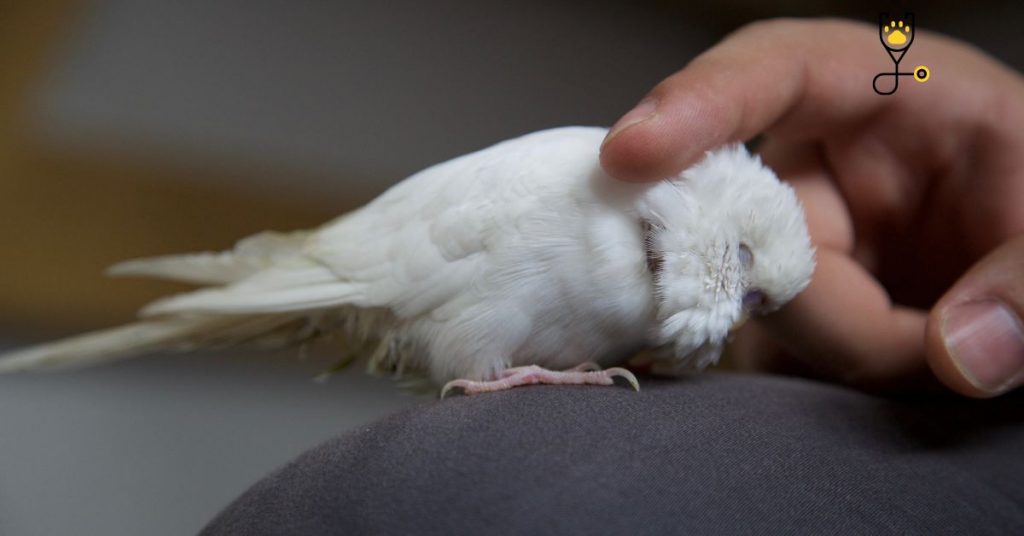
9. Train your bird in a variety of environments
It becomes comfortable with new sights, sounds, smells, and people around it. This can help reduce anxiety levels while ensuring that your parrot is able to meet its full potential as an intelligent companion animal.
10. Enjoy your training sessions with your pet parrot
Be proud of all the new skills, tricks, and behaviors that you have taught it! As someone who loves birds and has experience training animals, I wholeheartedly recommend training your pet parrot. With patience, consistency, positive reinforcement techniques, and some expert help when needed, you can create a strong bond with your feathered friend while also teaching it important life skills that will serve it well both now and in the future.
Best tricks To teach your bird
1. High-quality treats
Parrots respond well to treats and other positive reinforcement, so using high-quality treats that are both tasty and healthy can be a great way to motivate your pet.
2. Puzzle toys
Incorporating puzzle toys into training sessions is another great way to keep your parrot engaged and interested in learning new tricks.
3. Clickers
A clicker is a small, handheld device that makes a clicking sound when pressed. It can be an invaluable tool for training parrots, as it allows you to clearly mark the precise moment that your bird does the desired behavior or action.
4. Professional help
If you are struggling with particular areas of training or need help troubleshooting certain behaviors, it may be helpful to consult with a professional trainer or behaviorist. They can provide expert advice and assistance with all aspects of training your parrot, from teaching new tricks to resolving behavioral issues. So whether you are just starting out or looking to hone your existing skills, there are many tools and strategies that can help you successfully train a pet parrot. With patience, consistency, positive reinforcement techniques, and the right support when needed, you can create a strong bond with your feathered friend while also helping him learn important life skills along the way!
5. On-line resources
There are many useful online resources available to help you with your training efforts, including websites, blogs, and social media accounts that specialize in parrot training. These can provide helpful tips and strategies as well as a supportive community of other bird owners who can offer advice and support.When it comes to training a pet parrot, there are many different tools and strategies that you can use to help ensure success. Factors to consider include the age of your bird, its individual personality and temperament, the types of tricks or behaviors that you want to teach it, and whether professional assistance is needed for certain areas of training. With patience, consistency, positive reinforcement techniques, and some expert help when needed, you can create a strong bond with your feathered friend while also providing him with the skills he needs to thrive.So what are you waiting for? Get out there and start training your parrot today!ConclusionTraining a pet parrot can be an enjoyable and rewarding experience, but it is important to be patient and consistent in your efforts. There are many different factors to consider when training a parrot, including its age, personality, and individual needs.
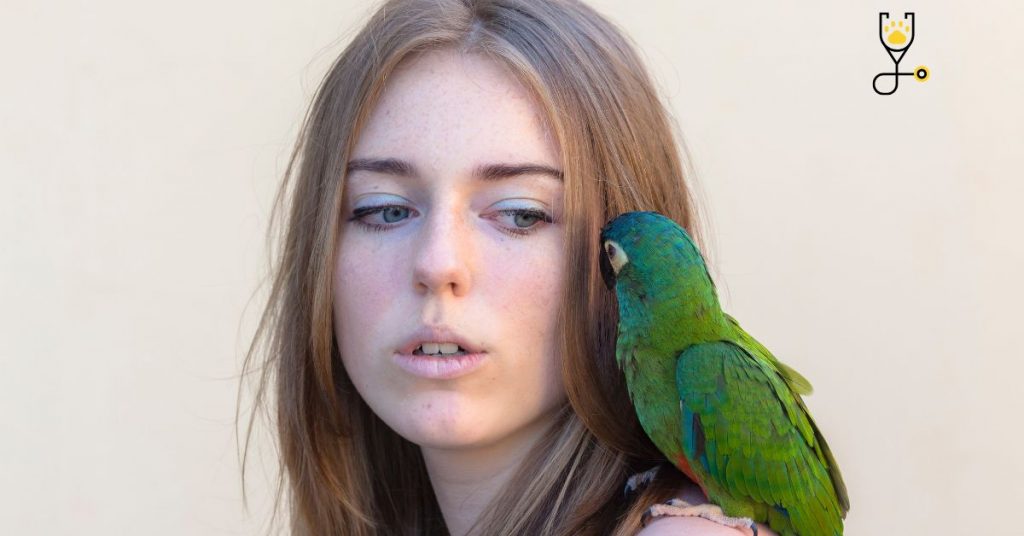
Conclusion:
When training a pet parrot, it is important to be patient, and consistent, and use a variety of tools and strategies. Factors to consider when training a parrot include its age, personality, individual needs, and whether professional assistance may be needed. Some useful tools for training a pet parrot include high-quality treats, puzzle toys, clickers, online resources, and professional help. With these tools and your own patience and consistency, you can create a strong bond with your feathered friend while helping it learn the skills it needs to thrive in its environment. So what are you waiting for? Start training your parrot today!
Frequently Asked Questions
A1: Some key factors to consider when training a pet parrot include its age, personality, individual needs, and whether professional assistance may be needed. Other important considerations include the types of tricks or behaviors you want to teach it, as well as the tools and strategies you will use in your training efforts. Additionally, it can be helpful to consult online resources such as blogs and social media accounts for support and advice from other bird owners.
There are many different tools and strategies that you can use to support your training efforts when working with a pet parrot. Some useful tools include high-quality treats, puzzle toys, clickers, professional help, and online resources. By using these tools in combination with patience, consistency, positive reinforcement techniques, and the right support when needed, you can successfully train your parrot while also building a strong bond with it. So what are you waiting for? Start training your parrot today!
Yes, there are several important things to keep in mind when training a pet parrot. These include being patient and consistent in your efforts, as well as taking the time to understand your bird’s individual needs and personality. Additionally, it can be helpful to consult with an expert when needed, such as if you are having trouble with specific behaviors or training techniques. With these tips and strategies in mind, you can successfully train your parrot while also creating a strong bond with it through this rewarding experience.
Yes, it is possible to train a parrot to speak or mimic words and phrases. However, this can be a time-consuming and difficult process and may require the use of training tools such as clickers, high-quality treats, and professional help. It is also important to keep in mind that different birds may learn at different speeds, so you will need to be patient and consistent in your efforts if you want your parrot to learn new words or phrases. With these tips and strategies in mind, you can successfully train your pet parrot to speak!
There are several different strategies and tips that you can use to create a strong bond with your pet parrot while also training it to learn new skills. These include being patient and consistent in your efforts, as well as taking the time to understand your bird’s individual needs and personality. Additionally, it can be helpful to consult with an expert when needed, such as if you are having difficulty training specific behaviors or using certain tools or techniques. With these tips and strategies in mind, you can successfully train your parrot while also creating a strong bond with it through this rewarding process. Good luck

